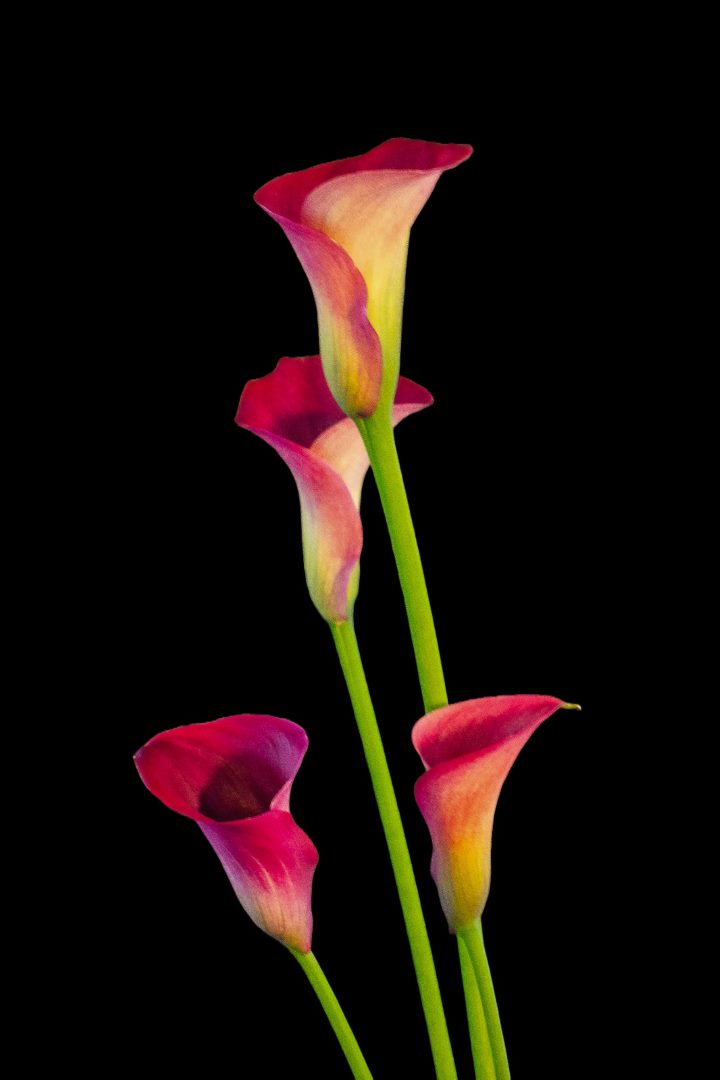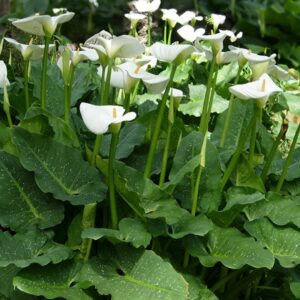Your cart is currently empty!
Mastering the Art of Growing Arum and Calla Lilies from Bulbs

Introduction
Arum lilies (Zantedeschia aethiopica) and Calla lilies (Zantedeschia spp.) are treasured for their exquisite, trumpet-shaped blooms and lush foliage. Growing these stunning plants from bulbs can be a rewarding experience, offering vibrant displays in your garden or indoor spaces. This comprehensive guide provides detailed instructions on planting, caring for, and maintaining Arum and Calla lilies to ensure they thrive and produce spectacular flowers.
Selecting and Preparing Bulbs
Choosing Quality Bulbs
- Healthy Bulbs: Select bulbs that are firm, plump, and free from mold, soft spots, or blemishes. Larger bulbs generally yield more robust plants and larger blooms.
- Variety Selection: Choose varieties that are suited to your local climate and desired garden aesthetics. Calla lilies come in various colors, including white, pink, yellow, orange, and deep purple.
Preparing Bulbs for Planting
- Soaking: Soak the bulbs in warm water for a few hours before planting to hydrate them thoroughly and jump-start their growth.
- Sprouting Indoors: Start the bulbs indoors in pots a few weeks before the last frost to give them a head start. This can result in earlier blooms and stronger plants.
Planting Arum and Calla Lilies
Optimal Planting Time
- Spring Planting: Plant the bulbs in spring after the last frost has passed. This ensures that the soil is warm enough for healthy growth.
- Fall Planting: In warmer climates, bulbs can be planted in the fall for winter blooms.
Planting Depth and Spacing
- Depth: Plant the bulbs about 5-10 cm deep. Correct depth helps establish strong root systems.
- Spacing: Space the bulbs 30-40 cm apart to allow for adequate air circulation and room for growth.
Soil Preparation
- Well-Drained Soil: Arum and Calla lilies thrive in well-drained, fertile soil. Avoid heavy, waterlogged soils that can lead to bulb rot.
- Soil Enrichment: Enrich the soil with organic matter such as compost or well-rotted manure to improve fertility and drainage.
Watering and Irrigation
- Consistent Moisture: Maintain consistent soil moisture but avoid waterlogging. Regular watering is essential, especially during dry periods.
- Irrigation Systems: Use drip irrigation or soaker hoses to maintain consistent moisture levels and prevent water from splashing on the leaves, which can lead to fungal diseases.
Fertilization
- Active Growth Phase: Apply a high-nitrogen fertilizer every two weeks during the active growth phase to promote lush foliage and robust growth.
- Flowering Phase: Switch to a high-potassium fertilizer once a week after flowering begins to support flower longevity and overall plant health.
- Slow-Release Fertilizers: Use a balanced slow-release fertilizer to provide a steady supply of nutrients throughout the growing season.
Light and Temperature Requirements
- Light: Arum and Calla lilies prefer full sun to partial shade. In hotter climates, some afternoon shade can prevent foliage from scorching.
- Temperature: Maintain daytime temperatures between 18°C to 24°C and nighttime temperatures between 16°C to 18°C. Avoid extreme temperature fluctuations to promote healthy growth.
Pest and Disease Management
- Common Pests: Thrips and aphids can affect lilies. Implement a preventative spray program and use insecticidal soaps to control these pests.
- Disease Prevention: Ensure good air circulation around the plants and avoid overhead watering to reduce the risk of fungal infections such as powdery mildew and gray mold.
Overwintering
- Cold Climates: In colder regions, lift the bulbs in the fall before the first frost. Clean them, let them dry, and store them in a cool, dry place until spring.
- Mulching: Apply a thick layer of mulch around the base of the plants to protect the rhizomes from frost if you choose to leave them in the ground.
Hydroponic Cultivation
Managing EC and pH Levels
- EC Levels: Maintain an electrical conductivity (EC) of 2.0-3.0 mS/cm. This range ensures adequate nutrient supply without causing toxicity.
- pH Levels: Keep the pH between 5.5 and 6.5, with 5.8 being optimal. This ensures nutrients are available for uptake.
Daily Maintenance
- Solution Management: Monitor and adjust the nutrient solution daily. Replenish the solution volume and maintain consistent EC and pH levels.
- Growth Conditions: Grow the lilies in a controlled environment with temperatures ranging from 17.5°C to 30°C and appropriate shading. Recirculate the nutrient solutions frequently.
Conclusion
Growing Arum and Calla lilies from bulbs is a rewarding experience that can add elegance and beauty to any garden. By selecting quality bulbs, planting them correctly, and providing the right care, you can enjoy these stunning flowers for many seasons. Whether you choose traditional soil planting or hydroponic cultivation, following these guidelines will help you achieve success with these remarkable plants. Regular monitoring and precise adjustments are key to preventing nutrient imbalances and promoting overall plant health.
By adhering to these guidelines and maintaining optimal growing conditions, you can ensure that your Arum and Calla lilies thrive and produce breathtaking blooms year after year.
References
- Detailed planting and care instructions for growing Calla and Arum lilies from bulbs.
- Insights on hydroponic cultivation and managing EC and pH levels for optimal growth.








Leave a Reply